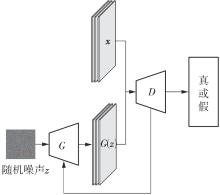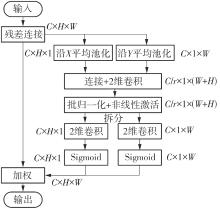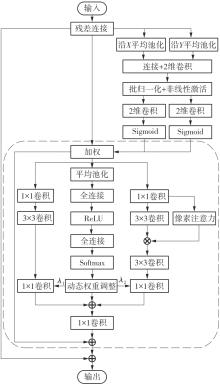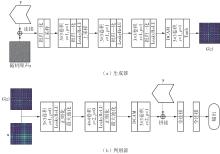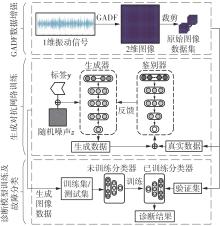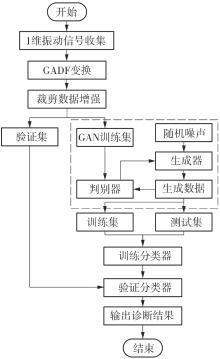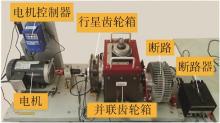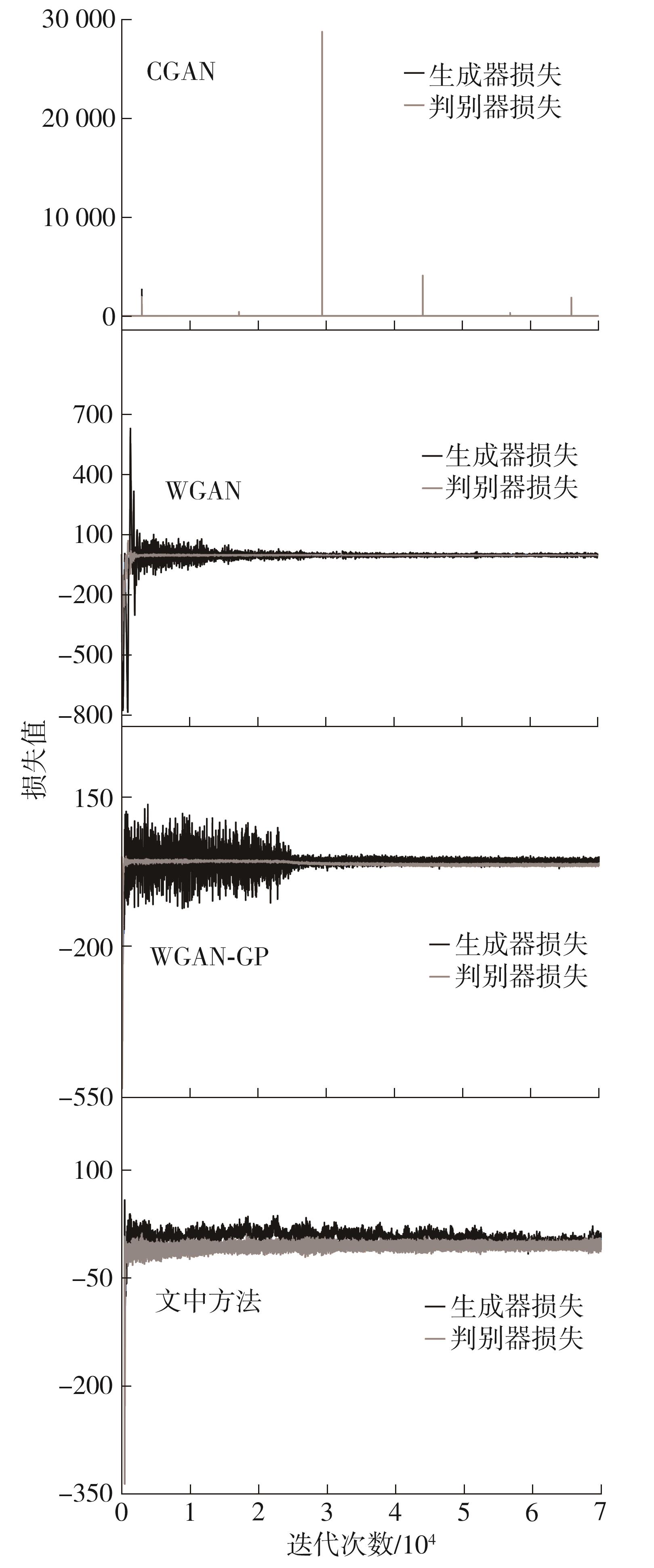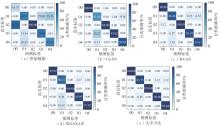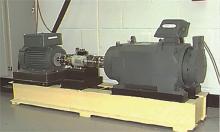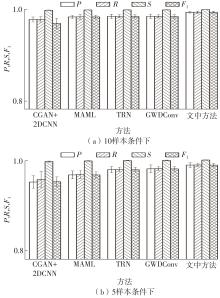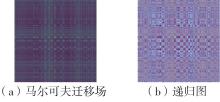Journal of South China University of Technology(Natural Science Edition) ›› 2024, Vol. 52 ›› Issue (10): 64-75.doi: 10.12141/j.issn.1000-565X.240021
• Computer Science & Technology • Previous Articles Next Articles
A Small Sample Rolling Bearing Fault Diagnosis Method Based on Gramian Angular Difference Field and Generative Adversarial Network
QIANG Ruiru( ), ZHAO Xiaoqiang(
), ZHAO Xiaoqiang( )
)
- College of Electrical and Information Engineering,Lanzhou University of Technology,Lanzhou 730050,Gansu,China
-
Received:2024-01-11Online:2024-10-25Published:2024-03-22 -
Contact:赵小强(1967—),男,博士,教授,主要从事数据挖掘、故障诊断研究。 E-mail:xqzhao@lut.edu.cn -
About author:强睿儒(1996—),男,博士生,主要从事数据挖掘、故障诊断研究。E-mail:853924752@qq.com -
Supported by:the National Natural Science Foundation of China(62263021);the College Industrial Support Project of Gansu Province(2023CYZC-24)
CLC Number:
Cite this article
QIANG Ruiru, ZHAO Xiaoqiang. A Small Sample Rolling Bearing Fault Diagnosis Method Based on Gramian Angular Difference Field and Generative Adversarial Network[J]. Journal of South China University of Technology(Natural Science Edition), 2024, 52(10): 64-75.
share this article
Table 3
Bearing fault diagnosis results for case 1"
| 方法 | 10样本下的诊断准确率/% | 5样本下的诊断准确率/% | ||||
|---|---|---|---|---|---|---|
| MobileNetV3 | ResNet34 | GhostNet | MobileNetV3 | ResNet34 | GhostNet | |
| 原始数据 | 71.67 | 68.23 | 63.54 | 63.75 | 62.91 | 62.29 |
| CGAN | 94.31 | 91.77 | 90.73 | 91.08 | 88.13 | 89.59 |
| WGAN | 94.21 | 92.44 | 93.76 | 93.79 | 90.13 | 89.58 |
| WGAN-GP | 95.98 | 94.83 | 94.10 | 94.01 | 92.75 | 93.03 |
| 文中方法 | 99.33 | 96.35 | 96.25 | 97.74 | 94.96 | 93.79 |
Table 4
Details of experimental data for case 2"
数据 标签 | 故障 位置 | 故障尺 寸/cm | 5样本裁剪划分的样本数 | 10样本裁剪划分的样本数 | ||
|---|---|---|---|---|---|---|
| 原始数据 | 验证集 | 原始数据 | 验证集 | |||
| 00 | 正常 | 224 | 96 | 448 | 192 | |
| 01 | BF | 0.017 78 | 224 | 96 | 448 | 192 |
| 02 | IF | 0.017 78 | 224 | 96 | 448 | 192 |
| 03 | OF | 0.017 78 | 224 | 96 | 448 | 192 |
| 04 | BF | 0.035 56 | 224 | 96 | 448 | 192 |
| 05 | IF | 0.035 56 | 224 | 96 | 448 | 192 |
| 06 | OF | 0.035 56 | 224 | 96 | 448 | 192 |
| 07 | BF | 0.053 34 | 224 | 96 | 448 | 192 |
| 08 | IF | 0.053 34 | 224 | 96 | 448 | 192 |
| 09 | OF | 0.053 34 | 224 | 96 | 448 | 192 |
| 10 | BF | 0.071 12 | 224 | 96 | 448 | 192 |
| 11 | IF | 0.071 12 | 224 | 96 | 448 | 192 |
| 1 | HUANG R, XIA J, ZHANG B,et al .Compound fault diagnosis for rotating machinery:state-of-the-art,cha-llenges,and opportunities[J].Journal of Dynamics,Monitoring and Diagnostics,2023,2(1):13-29. |
| 2 | WANG Q, XU F .A novel rolling bearing fault diagnosis method based on adaptive denoising convolutional neural network under noise background[J].Measurement,2023,218:113209/1-13. |
| 3 | 陈新度,扶治森,吴智恒,等 .基于多头卷积和差分自注意力的小样本故障诊断方法[J].华南理工大学学报(自然科学版),2023,51(7):21-33. |
| CHEN Xindu, FU Zhisen, WU Zhiheng,et al .Small-sample fault diagnosis method based on multi-head convolution and differential self-attention[J].Journal of South China University of Technology(Natural Science Edition),2023,51(7):21-33. | |
| 4 | NING S, WANG Y, CAI W,et al .Research on intelligent fault diagnosis of rolling bearing based on improved ShufflenetV2-LSTM[J].Journal of Sensors,2022,2022:8522206/1-13. |
| 5 | 陈仁祥,唐林林,胡小林,等 .不同转速下基于深度注意力迁移学习的滚动轴承故障诊断方法[J].振动与冲击,2022,41(12):95-101,195. |
| CHEN Renxiang, TANG Linlin, HU Xiaolin,et al .A rolling bearing fault diagnosis method based on deep attention transfer learning at different rotations[J].Journal of Vibration and Shock,2022,41(12):95-101,195. | |
| 6 | ZHANG X, ZHAO B, LIN Y .Machine learning based bearing fault diagnosis using the Case Western Reserve University data:a review[J].IEEE Access,2021,9:155598-155608. |
| 7 | ZHANG J, ZHANG K, AN Y,et al .An integrated multitasking intelligent bearing fault diagnosis scheme based on representation learning under imbalanced sample condition[J].IEEE Transactions on Neural Networks and Learning Systems,2024,35(5):6231-6242. |
| 8 | REN C, JIANG B, LU N .Task adaptation meta learning for few-shot fault diagnosis under multiple working conditions[C]∥ Proceedings of 2023 the 6th International Symposium on Autonomous Systems.Nanjing:IEEE,2023:10164461/1-5. |
| 9 | INDIRA V, VASANTHAKUMARI R, SUGUMARAN V .Minimum sample size determination of vibration signals in machine learning approach to fault diagnosis using power analysis[J].Expert Systems with Applications,2010,37(12):8650-8658. |
| 10 | LIU X, HUANG H, XIANG J .A personalized diagnosis method to detect faults in a bearing based on acceleration sensors and an FEM simulation driving support vector machine[J].Sensors,2020,20(2):420/1-13. |
| 11 | LIU X, HUANG H, XIANG J .A personalized diagnosis method to detect faults in gears using numerical simulation and extreme learning machine[J].Knowledge-Based Systems,2020,195:105653/1-13. |
| 12 | HU Y, XIONG Q, ZHU Q,et al .Few-shot transfer learning with attention for intelligent fault diagnosis of bearing[J].Journal of Mechanical Science and Technology,2022,36(12):6181-6192. |
| 13 | CHEN J, HU W, CAO D,et al .A meta-learning method for electric machine bearing fault diagnosis under varying working conditions with limited data[J].IEEE Transactions on Industrial Informatics,2022,19(3):2552-2564. |
| 14 | XIA P C, HUANG Y X, WANG Y X,et al .Augmentation-based discriminative meta-learning for cross-machine few-shot fault diagnosis[J].Science China Technological Sciences,2023,66(6):1698-1716. |
| 15 | HAN Y, LI B, HUANG Y,et al .Imbalanced fault classification of rolling bearing based on an improved oversampling method[J].Journal of the Brazilian Society of Mechanical Sciences and Engineering,2023,45(4):223/1-11. |
| 16 | YANG J, LIU J, XIE J,et al .Conditional GAN and 2-D CNN for bearing fault diagnosis with small samples[J].IEEE Transactions on Instrumentation and Measurement,2021,70:3525712/1-12. |
| 17 | FAN H, MA J, ZHANG X,et al .Intelligent data expansion approach of vibration gray texture images of rolling bearing based on improved WGAN-GP[J].Advances in Mechanical Engineering,2022,14(3):1-11. |
| 18 | ARJOVSKY M, CHINTALA S, BOTTOU L .Wasserstein generative adversarial networks[C]∥ Proceedings of the 34th International Conference on Machine Learning.Sydney:MLResearchPress,2017:214-223. |
| 19 | WANG Z, OATES T .Imaging time-series to improve classification and imputation[EB/OL].(2015-06-01)[2023-11-27].. |
| 20 | THANARAJ K P, PARVATHAVARTHINI B, TANIK U J,et al .Implementation of deep neural networks to classify EEG signals using gramian angular summation field for epilepsy diagnosis[EB/OL].(2020-05-08)[2023-11-27].. |
| 21 | GOODFELLOW I, POUGET-ABADIE J, MIRZA M,et al .Generative adversarial nets[C]∥ Proceedings of the 27th International Conference on Neural Information Processing Systems.Cambridge:MIT Press,2014:2672-2680. |
| 22 | MIRZA M, OSINDERO S .Conditional generative adversarial nets[EB/OL]. (2014-11-06)[2023-11-27].. |
| 23 | GULRAJANI I, AHMED F, ARJOVSKY M,et al .Improved training of Wasserstein GANs[C]∥ Proceedings of the 31st International Conference on Neural Information Processing Systems.Red Hook:Curran Associates Inc.,2017:5769-5779. |
| 24 | WOO S, PARK J, LEE J Y,et al .CBAM:convolutional block attention module[C]∥ Proceedings of the 15th European Conference on Computer Vision.Munich:Springer,2018:3-19. |
| 25 | HOU Q, ZHOU D, FENG J .Coordinate attention for efficient mobile network design[C]∥ Proceedings of 2021 IEEE/CVF Conference on Computer Vision and Pattern Recognition.Taipei:IEEE,2021:13713-13722. |
| 26 | CHEN H, GU J, ZHANG Z .Attention in attention network for image super-resolution[EB/OL]. (2021-04-19)[2023-11-27].. |
| 27 | ZHANG S, YE F, WANG B,et al .Few-shot bearing fault diagnosis based on model-agnostic meta-learning [J].IEEE Transactions on Industry Applications,2021,57(5):4754-4764. |
| 28 | LU N, HU H, YIN T,et al .Transfer relation network for fault diagnosis of rotating machinery with small data[J].IEEE Transactions on Cybernetics,2021,52(11):11927-11941. |
| 29 | LI T, SUN C, LI S,et al .Explainable graph wavelet denoising network for intelligent fault diagnosis[J].IEEE Transactions on Neural Networks and Learning Systems,2022,35(5):8535-8548. |
| 30 | WANG L, ZHANG L, QI X,et al .Deep attention-based imbalanced image classification[J].IEEE Transactions on Neural Networks and Learning Systems,2021,33(8):3320-3330. |
| [1] | ZHU Yu, XU Zhigang, ZHAO Xiangmo, WANG Runmin, QU Xiaobo. TsGAN-Based Automatic Generation Algorithm of Lane-Change Cut-in Test Scenarios on Expressways for Autonomous Vehicles [J]. Journal of South China University of Technology(Natural Science Edition), 2024, 52(8): 76-88. |
| [2] | HU Yongjian, ZHUO Sichao, LIU Beibei, WANG Yufei, LI Jicheng. Improvement of Cross-Dataset Performance of Face Forgery Detection Based on Multi-Scale Spatiotemporal Features and Tampering Probabilities [J]. Journal of South China University of Technology(Natural Science Edition), 2024, 52(6): 110-119. |
| [3] | ZHOU Lang, FAN Kun, QU Hua, et al. Forest Fire Recognition by Improved EfficientNet-E Model Based on ECA Attention Mechanism [J]. Journal of South China University of Technology(Natural Science Edition), 2024, 52(2): 42-49. |
| [4] | JIANG Shengchuan, ZHONG Shan, WU Difei, et al. Virtual Generation Method of Transportation Infrastructure Crack Images [J]. Journal of South China University of Technology(Natural Science Edition), 2024, 52(10): 146-158. |
| [5] | YANG Chunling, CHEN Wenjun, LIU Jiahui. Feature-Space Optimization-Inspired and Multi-Hypothesis Cross-Attention Reconstruction Neural Network for Video Compressive Sensing [J]. Journal of South China University of Technology(Natural Science Edition), 2024, 52(10): 9-21. |
| [6] | TIAN Sheng, SONG Lin, ZHAO Kailong. Point Cloud Classification Based on Offset Attention Mechanism and Multi-Feature Fusion [J]. Journal of South China University of Technology(Natural Science Edition), 2024, 52(1): 100-109. |
| [7] | LI Jiachun, LI Bowen, LIN Weiwei. AdfNet: An Adaptive Deep Forgery Detection Network Based on Diverse Features [J]. Journal of South China University of Technology(Natural Science Edition), 2023, 51(9): 82-89. |
| [8] | LI Haiyan, YIN Haolin, LI Peng, et al.. Image Inpainting Algorithm Based on Dense Feature Reasoning and Mix Loss Function [J]. Journal of South China University of Technology(Natural Science Edition), 2023, 51(9): 99-109. |
| [9] | GUO Enqiang, FU Xinsha. Dropped Object Detection Method Based on Feature Similarity Learning [J]. Journal of South China University of Technology(Natural Science Edition), 2023, 51(6): 30-41. |
| [10] | LIU Yupeng, ZHANG Lei. Cognitive Diagnosis Model Integrating Forgetting and Importance of Knowledge Points [J]. Journal of South China University of Technology(Natural Science Edition), 2023, 51(5): 54-62. |
| [11] | LU Lu, LAI Jinxiong. Smart Contract Vulnerability Detection Method Based on Capsule Network and Attention Mechanism [J]. Journal of South China University of Technology(Natural Science Edition), 2023, 51(5): 36-44. |
| [12] | ZHU Zhengyu, LUO Chao, HE Qianhua, et al. Multi-View Lip Motion and Voice Consistency Judgment Based on Lip Reconstruction and Three-Dimensional Coupled CNN [J]. Journal of South China University of Technology(Natural Science Edition), 2023, 51(5): 70-77. |
| [13] | ZHAO Rongchao, WU Baili, CHEN Zhuyun, et al. Graph Neural Network for Fault Diagnosis with Multi-Scale Time-Spatial Information Fusion Mechanism [J]. Journal of South China University of Technology(Natural Science Edition), 2023, 51(12): 42-52. |
| [14] | WO Yan, LIANG Jiyun, HAN Guoqiang. A cross-modal face retrieval method based on metric learning [J]. Journal of South China University of Technology(Natural Science Edition), 2022, 50(6): 1-9. |
| [15] | HUANG Min QI Haitao JIANG Chunlin. Coupled Collaborative Filtering Model Based on Attention Mechanism [J]. Journal of South China University of Technology(Natural Science Edition), 2021, 49(7): 59-65. |
| Viewed | ||||||
|
Full text |
|
|||||
|
Abstract |
|
|||||
